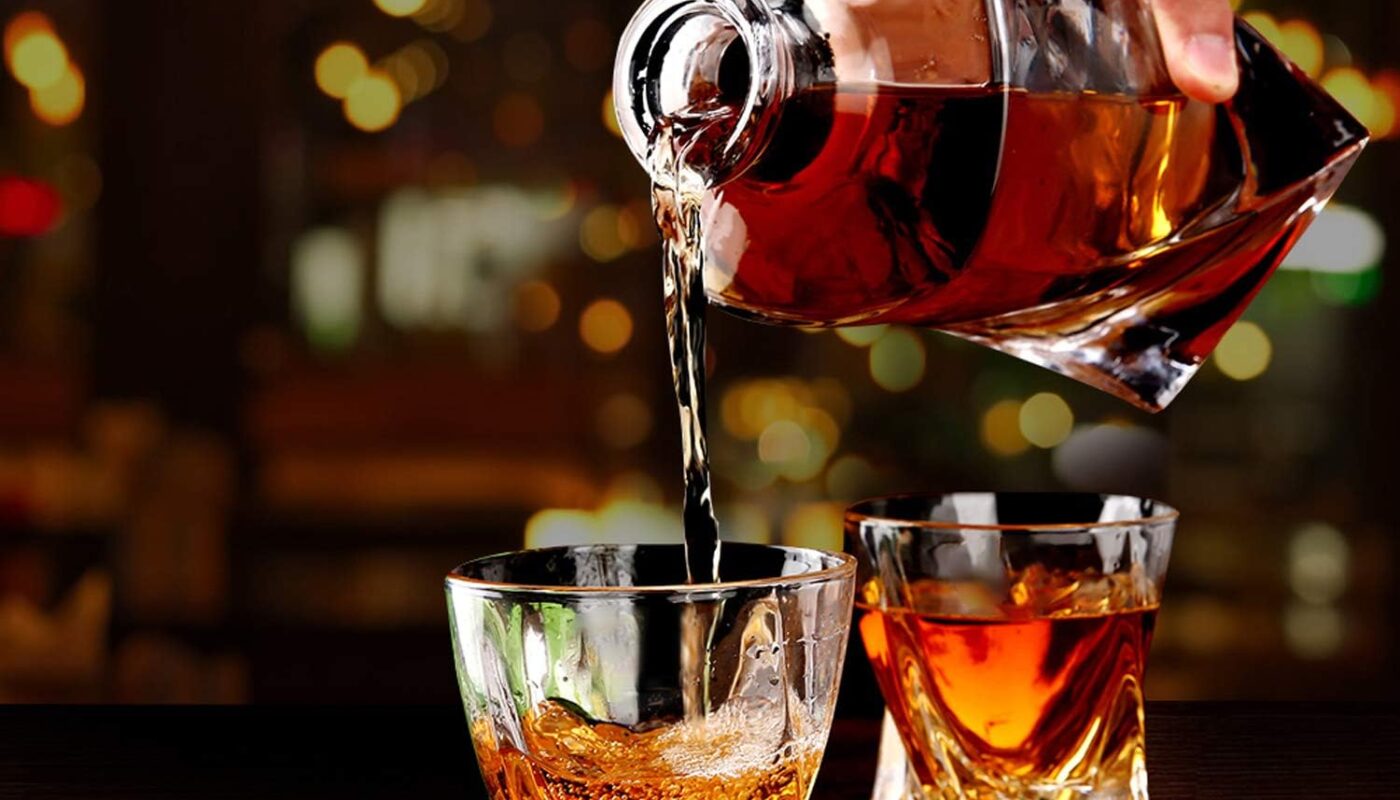Introduction
Alcohol has been enjoyed for centuries across civilizations. Some of the most popular alcoholic beverages consumed worldwide are known as distilled spirits. Distilled spirits are alcoholic drinks that are produced by distilling ethanol, which is the type of alcohol contained in alcoholic drinks, from fermented fruits, grains, vegetables, or sugars. In this article, we will take a closer look at various popular distilled spirits, their production processes and characteristics.
Whiskey
One of the most widely consumed distilled spirits globally is whiskey. Whiskey is produced from grains like barley, corn, rye or wheat that have been fermented and then distilled. There are several varieties of whiskey defined by the production process and ingredients used.
Scotch whiskey is produced in Scotland from malted barley. It is distilled and then aged in oak barrels for a minimum of three years, which contributes to its rich color and flavors. Irish whiskey is also produced from malted barley but employs a unique triple distillation process. American whiskey gets its name from being produced in the United States. The key varieties are bourbon and Tennessee whiskey, both made primarily from corn. Bourbon must be aged in charred oak barrels while Tennessee whiskey uses filtration through sugar maple charcoal. Canadian whiskey employs rye as the dominant grain and is usually lighter in flavor than other whiskies.
Rum
Rum is produced from sugarcane molasses or sugarcane juice primarily in the Caribbean, Central and South America. It is distilled into a clear liquid and then aged in wooden barrels to develop flavors. Popular varieties include light rum which is aged for a short time and maintains a light taste, gold or amber rum which is aged longer for a richer flavor, and dark rum that spends the most time in barrels resulting in a darker color and robust taste. Spiced rum often has floral, herbal or spice flavors added.
Vodka
Vodka is a neutral spirit that is typically distilled from grains or potatoes and does not have an age statement as it is not barrel aged. This neutrally flavored spirit makes vodka very mixable and versatile. However, there are a few varietals that focus more on the flavor of their base ingredients. For example, wheat vodka emphasizes the wheat flavors while potato vodka highlights the potato character. Flavored vodkas will have natural or artificial flavorings added.
Gin
Gin is produced by infusing or redistilling neutral spirits with botanicals like juniper berries, coriander, citrus peel, angelica root or fennel seeds. London dry gin developed as the predominant style which is dry, subtly flavored and often used in cocktails. Contemporary craft gins showcase unique botanical profiles. Old Tom gin has sweeter, less juniper-forward flavors akin to genever or Dutch gin styles from earlier eras. Navy strength gin has a higher alcohol content closer to its naval origins to prevent spoiling at sea. Flavored gins embrace seasonal or unusual botanical blends.
Tequila
Tequila is a spirit native to Mexico made primarily from blue agave plants. It is produced through steam-cooking agave piñas, fermenting the cooked agave pulp, then double distilling. Blanco or silver tequila is not barrel aged for its clean, vegetal character. Reposado sits in oak for 2-12 months imparting darker colors and oak flavors. Añejo ages longer for a smoother taste with honey, butterscotch or dried fruit notes emerging. Extra Añejo spends over three years maturing for the most mellowed, brandy-like flavors.
Production and Regulations
Distilled spirits are produced through a multi-step process of fermentation, distillation and in many cases aging. Strict regulations exist globally and within specific origin countries or regions to define production practices and ensure quality. For example, to be labeled bourbon, the whiskey must be made of at least 51% corn and aged in new charred oak barrels in the United States. Only tequila made in specific regions of Mexico from blue Weber agave can bear the tequila designation. Regulations exist to protect consumers and preserve heritage production methods. Advanced technologies like molecular distillation are increasingly utilized to distill at low temperatures while retaining flavors.
Cocktail Culture and Mixability
Distilled spirits are versatile ingredients that shine in crafted cocktails. Historically, alcohol consumption often involved mixing spirits to make diluted, flavored drinks suitable for various social occasions. Signature cocktails emerged showcasing different spirits and styles of mixology. Whiskey, gin and rum cocktails dot cocktail menus worldwide. Classic drinks include the old fashioned, Manhattan, negroni, mojito and daiquiri. Contemporary bartenders explore innovative botanical, seasonal or less common spirit-based concoctions. Mixability and developing new flavors from distilled spirits continues to inspire modern cocktail innovation.
Conclusion
From globally popular spirits to locally distinctive varietals, distilled beverages each have long legacies of production, traditional consumption, and cultural significance. Their diversity stems from the agricultural terroirs and distilling expertise in locations worldwide. Advances in science and techniques continually refine quality while maintaining heritage. Distilled spirits remain a valued part of social and culinary traditions. As cocktail culture evolves, these versatile ingredients will continue inspiring new tastes and experiences for years to come.



